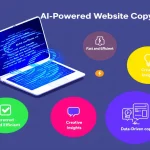AI Business Model Canvas Generator
Generating your business model canvas...
Your Business Model Canvas
Is this tool helpful?
How to Use the AI Business Model Canvas Generator Effectively
The AI Business Model Canvas Generator features an intuitive interface with several key input fields designed to capture your business model comprehensively. Here’s a detailed guide on filling out each section:
Essential Input Fields
- Business Name: Enter your company name (e.g., “EcoSmart Solutions” or “HealthTech Innovations”)
- Industry Selection: Choose from available options like Technology, Healthcare, Retail, etc.
- Business Stage: Select your current phase (Idea, Startup, Growth, or Maturity)
- Customer Segments: Detail your target markets (e.g., “Urban professionals aged 30-45 interested in sustainable living” or “Small medical practices with 5-20 employees”)
- Value Proposition: Describe your unique offering and benefits
Optional Components
- Revenue Streams: List your income sources
- Key Activities: Outline critical business operations
- Cost Structure: Detail major expense categories
Understanding the AI Business Model Canvas Generator
The AI Business Model Canvas Generator is a sophisticated digital tool that transforms traditional business planning into an interactive, AI-powered experience. It helps entrepreneurs, business strategists, and organizations systematically visualize, design, and update their business models using the proven Business Model Canvas framework.
Key Benefits of Using the AI Business Model Canvas Generator
Strategic Advantages
- Automated pattern recognition across successful business models
- Industry-specific insights and recommendations
- Real-time visualization of business model components
- Structured approach to business planning
Operational Benefits
- Time savings through AI-powered suggestions
- Reduced planning complexity
- Standardized documentation format
- Easy sharing and collaboration capabilities
Problem-Solving Capabilities
Business Model Analysis
The tool addresses common business planning challenges by providing structured analysis of each component. For example, when analyzing revenue streams:
- Input: Subscription service ($50/month per user) with 1,000 users
- Additional service fees ($200/consultation) with 100 consultations/month
Cost Structure Analysis
The tool helps break down and analyze costs:
$$\text{Total Monthly Costs} = \text{Fixed Costs} + \text{Variable Costs}$$Example calculation:
$$\text{Monthly Costs} = 25,000 \text{ (Fixed)} + (15 \times 1100) \text{ (Variable)} = 41,500$$Practical Applications and Use Cases
Startup Launch Planning
Consider a SaaS startup in the healthcare sector:
- Customer Segments: Small clinics and independent practitioners
- Value Proposition: AI-powered patient scheduling and billing
- Revenue Model: Tiered subscription ($199-$499/month)
- Key Activities: Software development, customer support
Business Model Pivoting
Example of a retail business transitioning to hybrid model:
- Original Model: Physical store sales
- New Model: Omnichannel retail with e-commerce integration
- Revenue Streams: In-store sales, online sales, virtual consultations
Frequently Asked Questions
General Questions
Q: Can I use the AI Business Model Canvas Generator for multiple business ideas?
A: Yes, you can create and save multiple business model canvases for different business ideas or iterations of the same business.
Q: How detailed should my customer segment description be?
A: Include demographic information, behavioral patterns, needs, and pain points. For example: “Urban millennials (25-35) interested in sustainable fashion, with disposable income of $50,000+”
Q: What makes a good value proposition?
A: Focus on specific benefits, unique features, and problem-solving capabilities. Example: “Reducing accounting costs by 40% through AI-powered automation while ensuring 99.9% accuracy”
Technical Aspects
Q: Can I export my business model canvas?
A: Yes, you can export your canvas in various formats including PDF and image files for sharing or presentation purposes.
Q: How often should I update my business model canvas?
A: Regular reviews are recommended, typically quarterly or when significant market changes occur.
Implementation Questions
Q: How do I identify key partnerships?
A: Consider suppliers, strategic allies, and service providers essential to your operations. Example: “Technology providers, distribution partners, and marketing agencies”
Q: What should I include in the cost structure?
A: List both fixed costs (rent, salaries) and variable costs (materials, commission). Example: “Software development team ($300,000/year), cloud infrastructure ($5,000/month), marketing ($10,000/month)”
Strategy Questions
Q: How can I validate my business model?
A: Use the tool to create multiple scenarios and test assumptions with different customer segments and revenue models.
Q: What makes a business model innovative?
A: Innovation can come from unique combinations of revenue streams, customer segments, or value propositions that differ from traditional industry approaches.
Important Disclaimer
The calculations, results, and content provided by our tools are not guaranteed to be accurate, complete, or reliable. Users are responsible for verifying and interpreting the results. Our content and tools may contain errors, biases, or inconsistencies. We reserve the right to save inputs and outputs from our tools for the purposes of error debugging, bias identification, and performance improvement. External companies providing AI models used in our tools may also save and process data in accordance with their own policies. By using our tools, you consent to this data collection and processing. We reserve the right to limit the usage of our tools based on current usability factors. By using our tools, you acknowledge that you have read, understood, and agreed to this disclaimer. You accept the inherent risks and limitations associated with the use of our tools and services.







